The 10 best horror films (that no one thinks are horror films)
Not all horror movies are gore and monsters and slashing knives
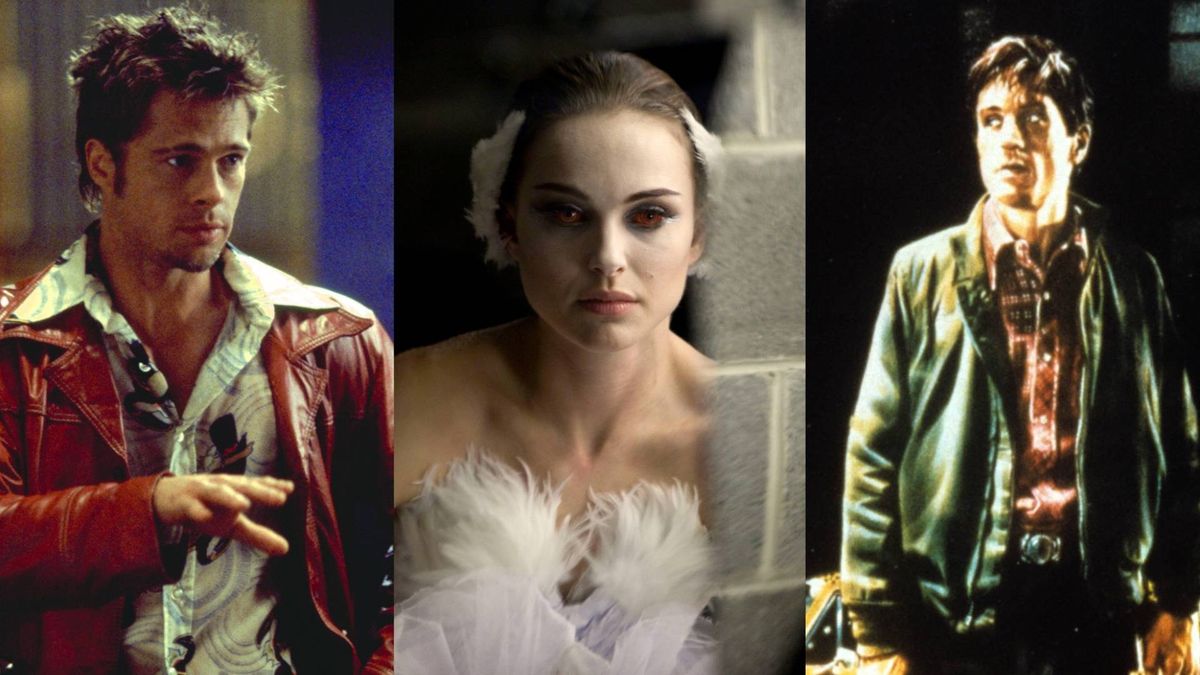
Ask any self-respecting horror fan what they think of terms like "elevated horror" and "social thriller" and they’re sure to spit blood. Such nomenclature, which has been applied over the last decade to movies like The Witch, The Babadook, Hereditary, Get Out, Relic, and Saint Maud, are loaded with the patronizing implication that "normal" horror is base. These terms are used by marketing bods (and, sadly, film journalists) who think that traditional horror is all about masked maniacs knifing teenagers (not that we’re opposed to that kind of film), and that any genre effort exploring such serious themes as grief and mental illness, loneliness, and faith, race and gender, must be hoisted clear of the cesspool.
In truth, horror’s always done it. Try on Nicolas Roeg’s Don’t Look Now (1973) or George A. Romero’s Night Of The Living Dead (1968) for size – they fit like a dress made by Buffalo Bill. Or check out the sophistication of Val Lewton’s genre movies for RKO Pictures in the 1940s (Cat People, I Walked With A Zombie, etc.) and James Whale’s horror films for Universal in the 1930s (Frankenstein, Bride Of Frankenstein, The Old Dark House, The Invisible Man). And that’s just the tip of the iceberg. So instead of stealing titles away from the genre, how about we give something back by highlighting 10 classics that can rightfully be tagged as horror but never/rarely are?
Read on for our unranked guide to the 10 best horror films that no one thinks are horror films. While you're at it too, check out our list of the best horror movies of all time too.
1. Fight Club
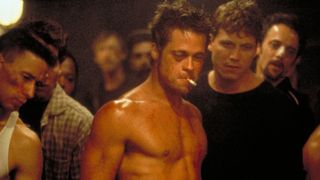
The film: David Fincher’s unflinching adaptation of Chuck Palahniuk’s novel sees two guys (Edward Norton’s buttoned-down Narrator and Brad Pitt’s charismatic Tyler Durden) start underground fisticuffs to shake up themselves and society. Fight Club flopped on release, with audiences expecting a punchy action movie rather than a ballsy, midnight-black satire on middle-class masculinity.
Why is it a horror movie? The Narrator and Tyler Durden turn out to be one and the same, a long-term horror trope that’s most famously used in Hitchcock’s Psycho (1960), in which mild-mannered Norman Bates talks to his mother and dresses up as her to flush Marion Crane’s life down the plughole. "You’re Dr. Jekyll and Mr. Jackass!" says Fight Club’s Marla (Helena Bonham Carter), and Robert Louis Stevenson’s 1886 novella similarly saw the respectable Jekyll unleash his id in the form of Hyde to act out his darkest impulses. All Fincher/Palahniuk do is give the concept a postmodern makeover. Viewed now, Fight Club is scarier than ever – and remarkably prescient, with the misplaced rage that fuels Project Mayhem (culminating in skyscrapers collapsing) anticipating the rise of the far right, incel subculture, and the radicalization of terrorists.
2. Mulholland Dr.
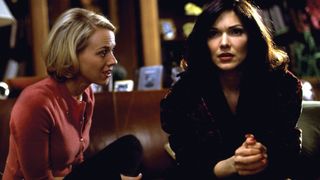
The film: Wannabe actress Betty Elms (Naomi Watts) arrives in Los Angeles from Deep River, Ontario to discover first an amnesiac, Rita (Laura Harring), holed up in her house, and then pools of darkness lurking between all those twinkling lights. The City of Angels has its demons, which Betty learns as masks slip and identities shift.
Why is it a horror movie? Tagged as a drama, a mystery, and a thriller by IMDb, Mulholland Dr. is all of those things, as well as featuring elements of musicals and, especially, film noir. But it’s also, undoubtedly, a horror movie, with a sustained atmosphere of dreamlike dread as the camera creeps down passageways and along walls to round corners (on one occasion, the sudden appearance of a homeless man offers one of cinema’s finest jump scares). Director David Lynch has always operated with one foot in the horror genre – few films or TV shows unnerve like Eraserhead, Twin Peaks, Blue Velvet, and Lost Highway – and his ability to conjure disquietude and distress out of spaces and soundscapes is matched only by Kiyoshi Kurosawa, whose Kairo (aka Pulse) represents the apex of J-horror.
Sign up for the Total Film Newsletter
Bringing all the latest movie news, features, and reviews to your inbox
3. There Will Be Blood
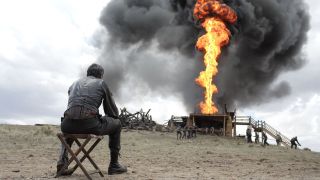
The film: Oilman Daniel Plainview (Daniel Day-Lewis) sinks his gigantic straw into the Californian desert and slurps up that liquid-gold milkshake.
Why is it a horror movie? From the ornate, ominous title to Jonny Greenwood’s dissonant, string-led score, Paul Thomas Anderson’s foundation myth screams horror film. And it doesn’t stop there, with PTA making use of the doppelganger/evil-twin trope that’s a favorite of the genre (the former can be found in Edgar Allan Poe’s William Wilson and Roger Corman’s The Masque Of The Red Death, the latter in Vincent Price vehicle The Haunted Palace and Cronenberg’s Dead Ringers): pastor Eli Sunday is identical to his brother Paul, while the pair never being seen together adds another disconcerting layer.
Plainview is a vampire, sucking the land dry. He also gorges on Eli and the townsfolk of Little Boston, and discards his 'son', H.W. (Dillon Freasier), when he’s no longer of use. Those final scenes of Plainview in his mansion evoke Jack Torrance in the Overlook Hotel as much as Charles Foster Kane in Xanadu. "Do you view There Will Be Blood as a horror film?" TF asked Anderson in 2010. "Absolutely," he said. "He’s Dracula in his fucking castle."
4. Black Swan
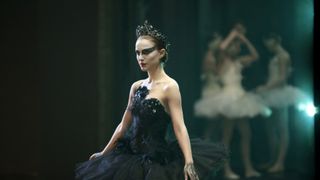
The film: Fragile ballet dancer Nina Sayers (Natalie Portman) is pushed to her limit and beyond by her overbearing mother (Barbara Hershey) and her mentor/director (Vincent Cassel) when she lands the dual roles of the white and black swans, Odette and Odile, in a production of Swan Lake.
Why is it a horror movie? Marketed as a drama and a psychological thriller – the latter being a long-favoured tag for horror films desiring to be taken seriously – Darren Aronofsky’s hysterical offering actually throws several horror sub-genres into the grinder. Mental disintegration, doppelgangers, body horror, werewolves (or rather wereswans, as Nina’s toes web and black feathers push through her skin)… all swirl deliriously as our heroine’s punished body cracks and snaps, and her mind splinters.
Along with Powell and Pressburger’s The Red Shoes, Dario Argento’s hyper-intense, hallucinatory Suspiria – set in a ballet school – is a touchstone, as are Repulsion, The Tenant and Rosemary’s Baby. "The word [horror]… people associate it with gore films," explained Aronofsky. "I just do what I do, and try to be original… But we were very interested in scaring the audience, so we’d talk about new ways to go 'Boo!'"
5. Jaws
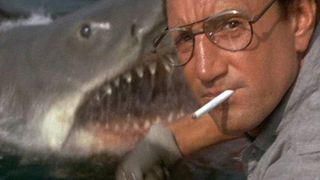
The film: As coastal resort Amity Island gears up for its Fourth of July celebrations, a great white shark starts munching swimmers.
Why is it a horror movie? Usually thought of as a boy’s-own adventure tale, propulsive and thrilling, and as a summer blockbuster – indeed, the movie that launched the modern blockbuster – Jaws is, in fact, a good old-fashioned monster movie. Like Val Lewton’s shadowy horror pictures of the ’40s, Jaws keeps its beast hidden for much of the running time (albeit because mechanical shark Bruce malfunctioned during the shoot), and Steven Spielberg serves up two perfect jump scares: the head rolling out of the sunken boat, and the shark bursting up to take a mouthful of chum.
Jaws can also be seen as part of the Nature Takes Revenge cycle of horror movies that was big in the ’70s (Frogs, Night Of The Lepus, Squirm, Empire Of The Ants, Kingdom Of The Spiders, Long Weekend), though it lacks the ecological subtext common to those films. And don’t forget that Spielberg has exhibited a fondness for horror throughout his illustrious career, both as director (Duel, Jurassic Park) and producer (Gremlins, Poltergeist, Paranormal Activity).
Read more: New horror movies | Best Netflix horror movies | Best witch movies | Best haunted house movies | Best horror movie remakes
6. Taxi Driver
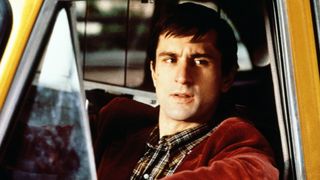
The film: Lonely Vietnam vet Travis Bickle (Robert De Niro) takes a job driving a cab all over New York City. "All the animals come out at night," muses his voiceover. "Whores, skunk pussies, buggers, queens, fairies, dopers, junkies. Sick, venal. Someday a real rain will come and wash all this scum off the streets."
Why is it a horror movie? Normally categorized as a drama, Martin Scorsese’s masterpiece rejects such neat labeling. Shot on location during the hot summer of ’75, the nighttime atmosphere was, said Scorsese, like a “seeping virus”. It slicks every frame of a film that occupies a twilight zone between fevered fantasy and grim reality, as Bickle’s mind slides into paranoia and madness – a staple of horror – as surely as his cab glides through steam rising from subway grates (Taxi Driver’s equivalent to mist in a Universal monster movie).
"The idea was to make a cross between a Gothic horror and the New York Daily News," said Scorsese, who’s also made reference to Travis being like a nosferatu in a yellow coffin. Only The Texas Chain Saw Massacre so captures the sickness of an America torn apart by civil-rights riots, political assassinations, the oil embargo, the Watergate scandal, and, of course, Vietnam.
7. Persona
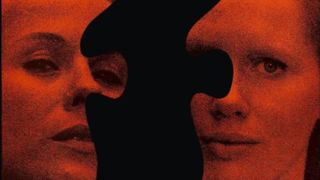
The film: Stage actress Elisabet Vogler (Liv Ullmann) stops speaking in the middle of a performance. In the grip of a breakdown, she’s nursed by Alma (Bibi Andersson) at an isolated summer home. Alma chatters, Elisabet listens, and the two women’s identities begin to merge.
Why is it a horror movie? It’s widely agreed that Swedish auteur Ingmar Bergman made just the single horror film, Hour Of The Wolf, but the genre haunts several of his titles: The Magician, The Virgin Spring (Wes Craven’s blueprint for The Last House On The Left), The Silence (seeds of The Shining), Cries And Whispers, and Fanny And Alexander. Persona is a cabin-in-the-woods (or rather, cabin-on-the-coast) tale exploring what men find most terrifying of all – female identity.
Elisabet subsumes Alma (perhaps her greatest performance, and certainly an act of emotional vampirism) and the film takes place in a liminal dream space… or rather, nightmare space. Written by Bergman during a bout of double pneumonia, Persona explores the "hunger" of his artistic creativity, and how his "bag of tricks" is rendered meaningless by real-world atrocities – images of Vietnam are seen on a television. Its tale of warring/melding women influenced Altman’s 3 Women, Lynch’s Mulholland Dr., and Rose Glass’ Saint Maud.
8. The Silence of the Lambs
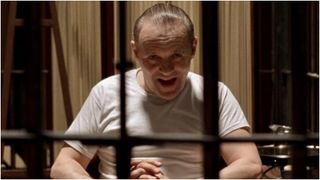
The film: In order to catch skin-flaying serial killer, Buffalo Bill, trainee FBI agent Clarice Starling (Jodie Foster) must pick the brains of incarcerated sophisticate/nutjob Hannibal 'The Cannibal' Lecter (Anthony Hopkins).
Why is it a horror movie? Did you miss the bit about the skin-flaying serial killer and the cannibal? Of course, Jonathan Demme’s much-loved classic is a horror film, and that’s before you consider the Gothic chamber that imprisons Lecter, the blood-drenched, Grand Guignol set-pieces, and that climactic night-vision sequence. Demme began his career in exploitation flicks under Roger Corman, and this is another gaudy, gory B-movie, only masquerading as quality mainstream entertainment.
It fooled the notoriously snobby Academy, who don’t award horror movies, and thought they gave Best Picture, Director, Actor, Actress, and Adapted Screenplay to a crime drama/psychological thriller. It fooled journalists too, with many articles claiming that Get Out, in 2018, was the first horror film to be nominated for Best Picture since The Exorcist in 1974, overlooking not just Lambs but also Jaws, The Sixth Sense, and Black Swan. "With The Silence Of The Lambs, we wanted to create this extraordinary mood of dread and suspense," said Demme.
9. Apocalypse Now
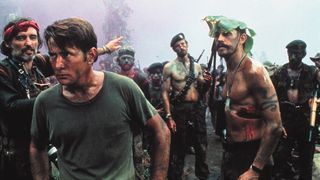
The film: In the midst of the Vietnam War, Captain Benjamin Willard (Martin Sheen) is tasked with traveling up the Nung River to assassinate the renegade Colonel Kurtz (Marlon Brando) with extreme prejudice.
Why is it a horror movie? There’s a jump scare involving a pouncing tiger in the jungle, and Kurtz, when finally encountered, cleaves to shifting shadows like Dracula. But that’s just Halloween window dressing. The real reason that Francis Ford Coppola’s extraordinary war picture can be viewed as a horror film is down to its gonzo, hallucinatory visuals – forests going up in flames, Vietnamese civilians bombed to Wagner’s 'Ride Of The Valkyries', decapitated heads, the execution of Kurtz intercut with the ritualistic (real-life) slaying of a water buffalo – and the fact that it transposes Joseph Conrad’s Heart Of Darkness to Vietnam. Conrad’s novel parallels an outward odyssey and an inner journey, the latter tracking a descent into Hell as our protagonist discovers the beast within.
Every frame of Apocalypse Now is drenched with delirium and madness, while death, dished with glee, is also everywhere you look – and is there anything more horrific than humanity losing its humanity? "The horror, the horror," mumbles Kurtz as he cradles his head. Indeed.
10. Harry Potter and the Prisoner of Azkaban
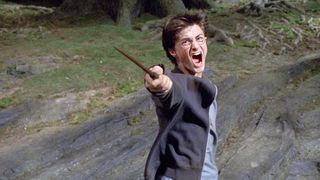
The film: The third Harry Potter movie sees crazed criminal Sirius Black (Gary Oldman) on the loose, and Hogwarts School of Witchcraft and Wizardry guarded by the wraithlike Dementors.
Why is it a horror movie? Each new Potter film was sold as being "darker" and "more adult" than the last, as Voldemort grew stronger and so did the kids’ hormones. But it was Prisoner Of Azkaban that made the biggest leap, with safe director Chris Columbus (Home Alone, Mrs. Doubtfire) replaced by curveball choice Alfonso Cuarón (Great Expectations, Y Tu Mamá También). The source material was already tinged with horror – new Defence Against the Dark Arts professor Remus Lupin is a werewolf – but Cuarón leaned in hard.
The frankly terrifying scene of Dementors searching the Hogwarts Express quickly establishes that he’s not here to mess around, while the attention he pays to the changing seasons and Hogwarts’ grounds, including the Dark Forest, bring a folk-horror vibe to the action. Even the obligatory quidditch match is a storm-lashed affair. And making things spookier still is Hogwarts’ Frog Choir singing ‘Double Trouble’ ("Something wicked this way comes!") over the wintry landscapes. Like Poltergeist, Prisoner Of Azkaban is a horror movie designed to scare parents and children alike. Cuarón also recently told us that he agrees.
For more, read our guides to the best horror movie sequels, the best vampire movies, the best horror comedies, and the best horror movies for scaredy cats.
Jamie Graham is the Editor-at-Large of Total Film magazine. You'll likely find them around these parts reviewing the biggest films on the planet and speaking to some of the biggest stars in the business – that's just what Jamie does. Jamie has also written for outlets like SFX and the Sunday Times Culture, and appeared on podcasts exploring the wondrous worlds of occult and horror.
Most Popular



